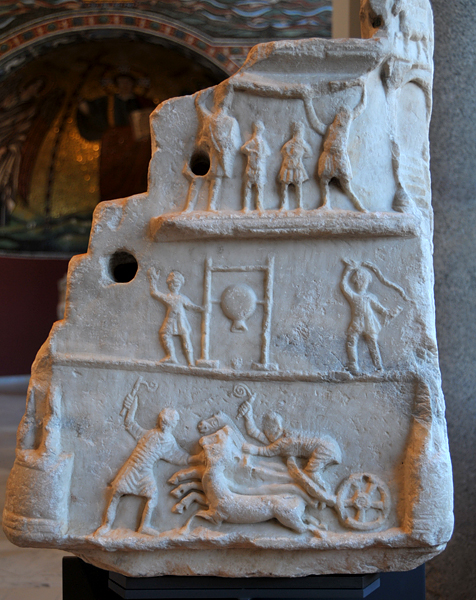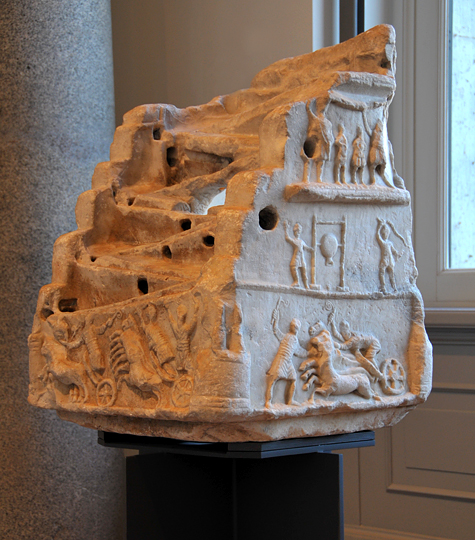
This unique object, which was acquired by the Bode Museum (Berlin) in 1891, is a gambling machine purportedly found near the Hippodrome in Constantinople. The reliefs depict a day at the races there. On this panel, the races begin with a banner being raised as musicians play the aulos, a double flute. Below, a drum-like device has deposited a ball on the ground, the color of which signifies which racing faction will have the choice of lanes. Finally, the race begins, an hortator exhorting the whipped horses to even greater effort.

On the opposite panel, the action is reversed—with the victorious charioteer, his whip raised in triumph, being awarded the palm of victory. On either side are the turning posts of the Hippodrome, which here can be seen to better effect. Above, he holds up the palm and his winnings to the admiring gaze of a woman in the window. Men at the top hold the racing banner to the accompaniment of musicians, but this time it is being lowered, signifying the end of the race.

On this side, the race continues, with the driver in front using his whip to shy the horses of the quadriga behind him. What is intriguing, however, are the seven channels that run diagonally from upper right to lower left. Balls representing the colors of the racing factions—either red, blue, green, or white—would be placed at top. As they rolled down the shoot, holes at each end allowed them to drop into additional channels, disrupting the original order in which they had been played. It therefore was not possible to predict which colored ball would reach the bottom first. Such games of chance were banned in AD 534, and this gaming device dates to approximately that time.